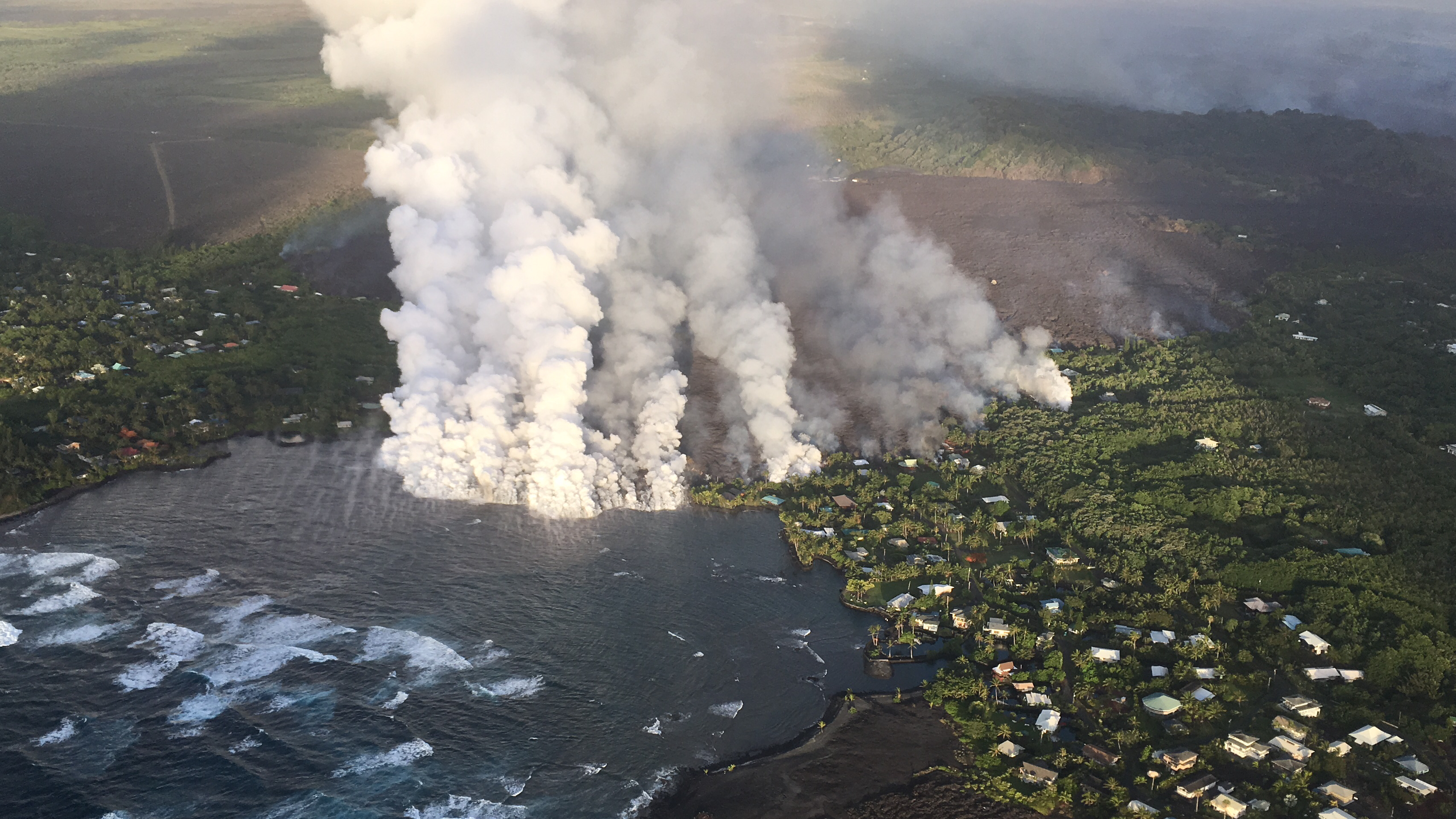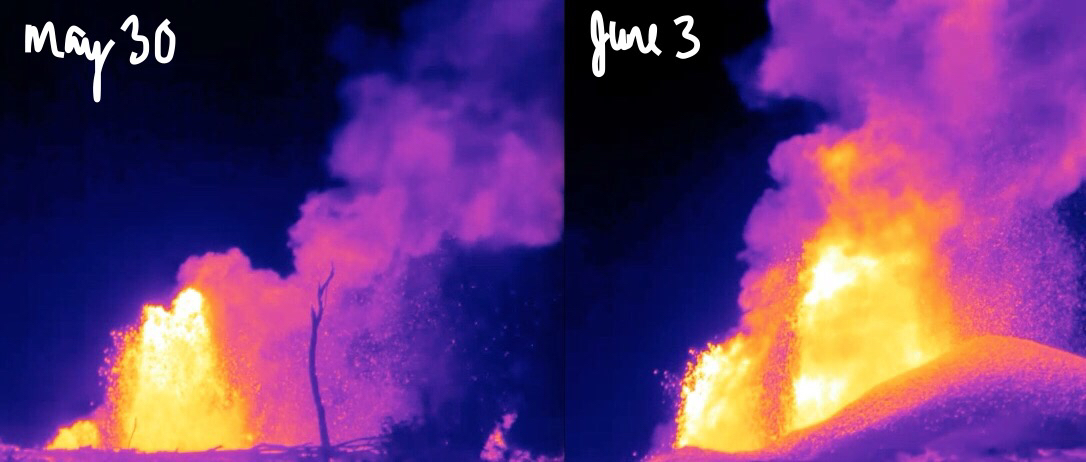The lava from fissure 8 entered the ocean at Kapoho Bay at about 10:30 PM HST on June 3 generating a laze plume that is blowing inland but dissipating quickly. As of today morning, the lava is also constructing a delta in Kapoho Bay extending a few hundred yards into the bay.
The lava flow front is half a mile wide. A sluggish lava flow was observed in the vicinity of fissure 18 and rest of the fissures are all inactive.
Volcanic gas emissions remain very high from the fissure eruptions and also at the summit. Trade wind conditions are bringing vog to the south and west sides of the Island of Hawaii. Afternoon easterly winds may bring vog to communities in the Volcano area.
Inward slumping of the rim and walls of the walls of Halema`uma`u continues in response to persistent subsidence.
The USGS is predicting an increased earthquake activity in the coming days.
Some of the photos from USGS update today:
Video from helicopter overflight of Kīlauea Volcano's lower East Rift Zone on June 4, 2018, shows lava from fissure 8 entering the ocean at Kapoho Bay. View to the north.


No comments:
Post a Comment